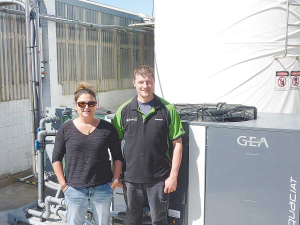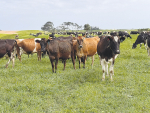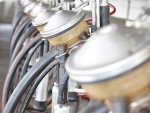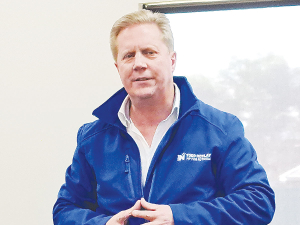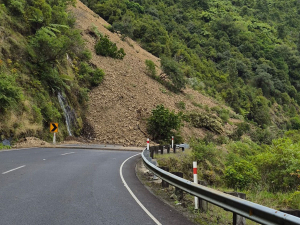For Southland dairy farmers Ferdinand Vries and Stacey Young, running an environmentally friendly operation has become top priority in recent years.
When it came to upgrading their milk cooling system, they wanted a unit that was not only reliable and cost-effective but also energy efficient.
“We went with the GEA aquaCHILL because we were sure it was the most efficient unit out there,” says Ferdinand.
“It’s a very efficient unit; at the end of milking the unit turns off, milk goes in at 4ºC, you don’t have to worry about it.”
The GEA aquaCHILL is a cooling system that can snap chill milk to 4ºC while significantly reducing energy consumption. Designed to only run during milking, no additional power is required between milkings to offset losses from systems using thermal storage. It also includes unique energy saving features, helping to lower the overall current draw of the unit to reduce power consumption and monthly costs.
The duo agrees the aquaCHILL is a cost-effective option.
“If milk flow isn’t as high as what you think it would be, the unit cuts down to 50% running – the power drawn is actually very little compared to your normal, standard vat refrigeration unit,” says Ferdinand.
Stacey points out that they have already noticed a reduction in power consumption after running the aquaCHILL for two months. “So far, we are looking at roughly $200 a month in power saving, so we are quite happy with that.”
“We are getting 700 litres of hot water every milking out of the unit, so it is a massive power saving on the water heating side of it,” Ferdinand adds. With the changing milk cooling regulations from Fonterra, GEA’s aquaCHILL comes with the invaluable advantage of not having to worry about meeting requirements, with the ability to be tailored to meet both current and future cooling standards – easily.
“Milk is our source of income and we need to protect it and make sure it’s getting picked up. The best insurance policy was putting in the snap chiller – it’s income protection insurance.”
“The main benefit is absolute peace of mind. When the shed is turned off, the milk is down to temperature – there’s no worrying about whether the plate cooler was working or if the well water was cold enough. When we finish milking, the milk is chilled, and they can pick it up any time they want.
“We were never not making it, but it was always a struggle. Now with the aquaCHILL it’s no worry at all, the milk is always under 6ºC - no matter what.”
The install experience with GEA’s service partner, Nind Dairy Services, was hassle-free with little disruption to the farm’s daily operation.
“As per usual, Nind is very efficient, quick – in and out – done over two days between milkings. The second day was only maybe an hour just to finish off and go over how to operate it then we were into it. There was pretty much no interruption to us, which was ideal.
“Knowing how well the aquaCHILL works and how efficient it is, I wish we had put it in 10 years ago.”
Running in tandem with your vat, the aquaCHILL is designed to help farmers meet cooling standards with a simple ‘plug and play’ solution that can be retrofitted to work with any system, existing or new.
Farm facts
- Herd size: 400 cows peaking at 12,000L of milk per day
- Farm size: 150ha total
- Location: Invercargill, Southland, New Zealand
- Milking parlour: 28-unit herringbone parlour

